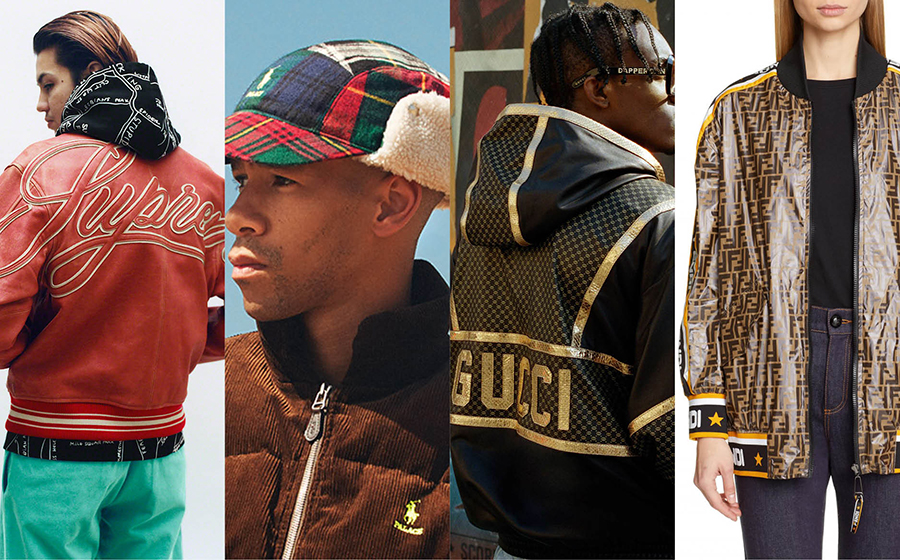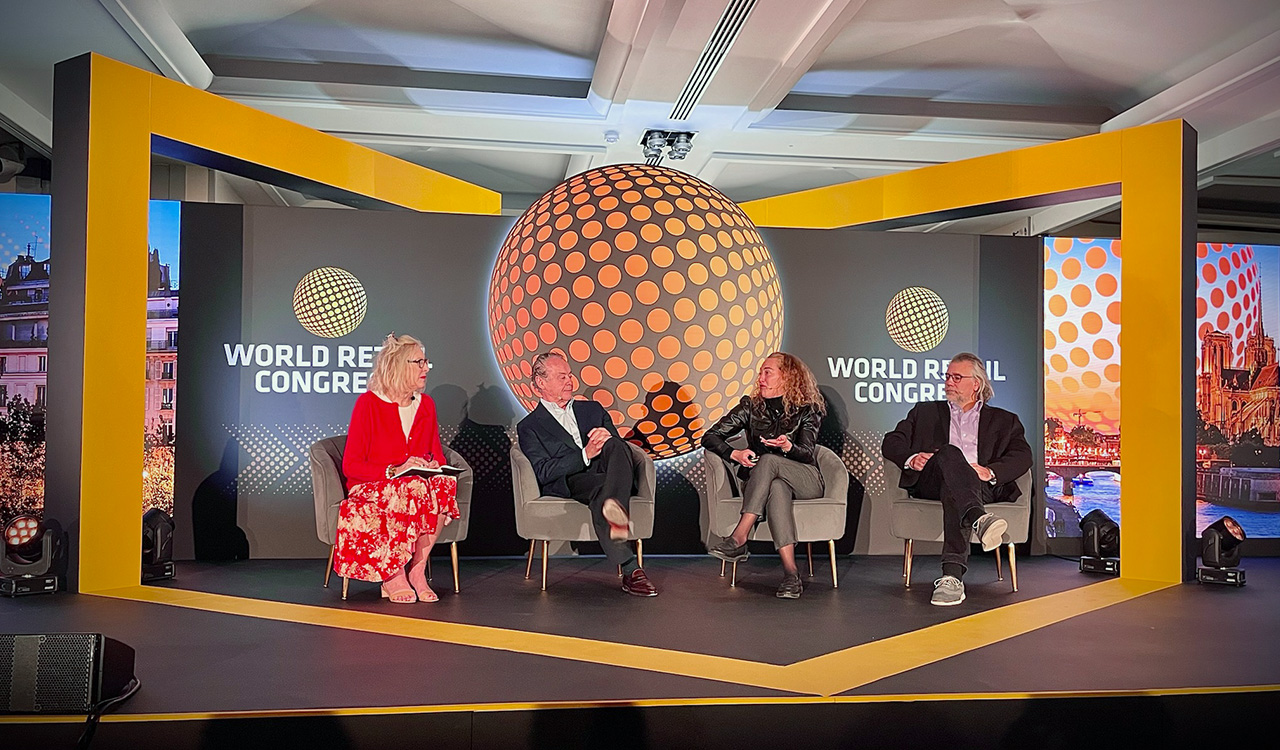Luxury brands are hitting the street, literally. Street-inspired fashion is popping up all across the luxury spectrum. It has created such pairings as Gucci and Dapper Dan, Louis Vuitton and Supreme, Ralph Lauren and Palace, Fendi and Fila and Chanel and Pharrell Williams. Most of these are limited-edition collaborations, but LVMH brought on Virgil Abloh, of Off-White fame, as men\’s design director and just launched a Maison under pop-icon Rhianna.
Looking at these brands\’ streetwear offerings, I wonder where \”my\” luxury brands are. But that is exactly the point. Luxury streetwear is for a new customer and it is growing and a powerful force.
Passing Fad or Long-Term Trend?
While estimates of the streetwear market size are sketchy, Statista estimated it approached $200 billion globally in 2015, which was a year or two ahead of its time when streetwear began to hit luxury runways. Chances are it has more than doubled since that time.
As for the luxury segment, Bain and Altagamma in their Spring 2018 luxury update credited streetwear with driving dynamic growth for the personal luxury market in 2017, but oddly it gets no mention in the current report signaling the trend has gone mainstream.
Demand for streetwear has also opened new e-commerce opportunities to pedal its wares, both mainstream and luxury. Fashionista reported investors have ponied up nearly $200 million into online streetwear marketplaces including Goat, Grailed, StockX, Stadium Goods, Hypebeast and Highsnobiety. And Fast Company announced Supreme was the first streetwear brand to reach unicorn status in 2017 when The Carlyle Group acquired a 50 percent stake in the company.
What Does Streetwear Mean for Luxury Brands?
To get a perspective on streetwear\’s long-term impact on the luxury market, I sat down with Dr. Martina Olbertova, founder of Meaning.Global, and arguably the world\’s authority on brand meaning. Her company defines its mission: \”We explore the shifting cultural meanings in society to help you understand and navigate the world and create cultural relevance.\”
As a class of goods, Olbertova sees luxury streetwear as first and foremost a signpost in shifting cultural meaning both within the culture at large and in luxury brands\’ internal corporate culture. She doesn\’t see the adoption and expression of streetwear aesthetics as threatening the integrity of luxury brands. Rather, she sees the danger in luxury brands adopting streetwear\’s here-today, gone-tomorrow focus and becoming irrelevant.
\”Streetwear will not kill the luxury market, but the luxury market will kill itself if it starts operating and behaving like streetwear,\” she says. Having just published a study on redefining the meaning of luxury, Olbertova believes luxury brands have much to learn from streetwear. It represents a tangible expression of meaning to its young customers, who use it to express their individuality. \”It capitalizes on the cultural zeitgeist. In other words, it\’s both customer and culturally relevant. It has a clear sense of meaning in the here and now. The solution isn\’t about mimicking streetwear, but developing a new culturally relevant meaning of luxury in the future, just like streetwear is culturally relevant to people today,\” she says.
Imitation may be the sincerest form of flattery, but luxury brands can\’t simply imitate streetwear\’s focus on its \”see now buy now\” formula. In pursuit of growth, luxury brands may be pivoting away from creating lasting value through deep cultural meaning to become more like high-street\’s brands. Olbertova believes iconic luxury brands could become \”Consumed with trends, short production cycles, and fast consumption ending up losing its meaning.\”
Efficiency or Effectiveness?
Olbertova sees the danger in luxury brands\’ obsession with streetwear resulting in a shift away from effectiveness toward efficiency. Philosophically, \”effectiveness and efficiency are two vastly different concepts,\” she explains. \”Efficiency is all about minimizing costs and finding new cost-effective channels to achieve similar results.\” Effectiveness, on the other hand, is about maximizing value, which is what luxury brands need to aim for. \”It is about imagination, creativity and ingenuity and human capacity to create new value and deliver it in unexpected ways,\” she says. Luxury brands are first and foremost value creators. Olbertova reflects, \”the strategy is opposite to the high-street model. It\’s not about efficiency, it is about effectiveness. You have to create value in order to deliver value and get results.
Restoring Luxury Brands\’ Meaning
\”The core problem here actually isn\’t about streetwear at all, it is about what streetwear represents to luxury brands that is of issue,\” Olbertova shares. They should mimic the streetwear model only in so far as it delivers the means for customers to express their individuality by tapping underlying themes in the culture.
Traditional luxury brands are threatened by losing sight of the deeper meanings, themes and forms of individual expression their legacy customers desire. \”They should adapt and lead from their unique essence to add more value,\” she continues. \”They should aspire to create a new more competitive model to deliver unique value to their customers and use streetwear as an inspiration for boosting their own relevance, not to replicate their success via imitation.\”
Olbertova gives luxury brands a call to action to get back to what made them great in the first place and project that forward, not undermine value creation by caving to what is popular for the moment. \”Luxury brands have always been the champions of long-term value, where the idea of longevity has been one of their key pillars to justify the increase price. Luxury costs more because it means more.\”
Olbertova concludes. \”Meaning decides whether the brand thrives or plummets. Brands need to rise above the clutter and define new ways to express their unique essence – which is tied to their brand value – to attract new and existing customers in culturally relevant ways.\”
Will streetwear be the end of luxury as we know it? It might be to the traditionalist, as streetwear risks compromising their old-world luxury image. Streetwear is a self-expressive movement that has found its voice and audience. The challenge for traditional luxury brands is to stay relevant to both audiences. We will see how this plays out in attracting a new customer and retaining the old. Ultimately, the chief value of luxury brands to its customers and stakeholders is in its brand equity.




